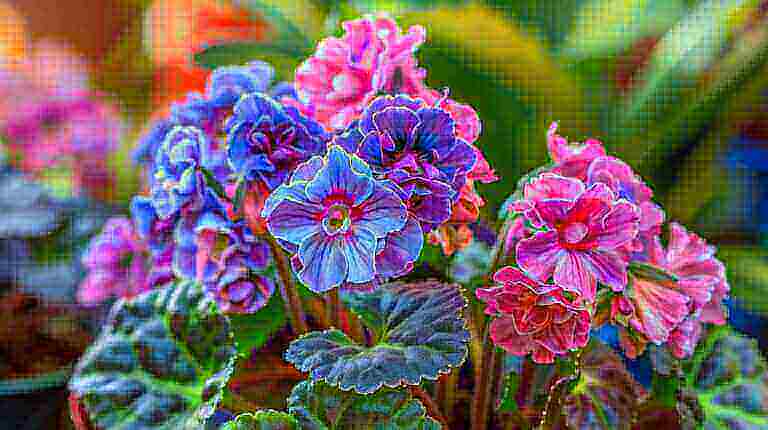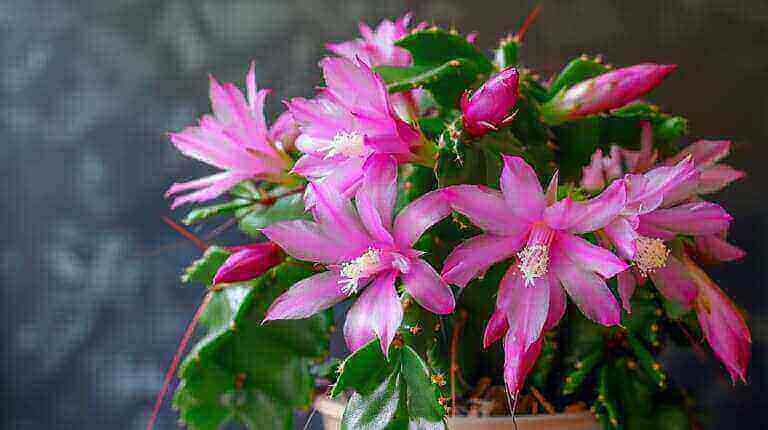Why Does My Philodendron Leaf Have Brown Spots? Causes and Treatment for Brown Spots on Philodendron Leaves
Have you ever wondered why your precious philodendron plant develops unsightly brown spots on its leaves? Like a detective unraveling a mystery, this article aims to shed light on the causes and treatment of this common issue.
From environmental factors and pest infestations to nutritional deficiencies, we will explore the various culprits behind those brown spots.
Additionally, we will provide effective treatments to restore your philodendron’s health and beauty.
So, join us as we uncover the secrets to keeping your philodendron vibrant and spot-free.
Key Takeaways
- Overwatering and root rot, sunburn, nutritional deficiencies, and pests infestation can all cause brown spots on Philodendron leaves.
- Fluctuations in temperature, high or insufficient humidity, and excessive humidity can also contribute to the development of brown spots.
- Regular inspection and cleaning of leaves and stems, proper ventilation, and avoiding overcrowding plants can help prevent pest infestation.
- Pruning affected leaves, adjusting watering, improving drainage, using fungicides, and incorporating natural remedies can be effective treatments for brown spots on Philodendron leaves.
Common Causes of Brown Spots on Your Philodendron
One of the most common causes of brown spots on philodendron leaves is overwatering. Many plant owners make the mistake of giving their philodendron too much water, thinking they are providing adequate hydration. However, overwatering can lead to root rot and nutrient deficiencies, resulting in brown spots on the leaves. To prevent this, it is important to ensure proper drainage and allow the top inch of soil to dry out before watering again.
Another factor that can contribute to brown spots on philodendron leaves is sunburn. Philodendrons prefer bright, indirect sunlight, and exposure to direct sunlight can cause the leaves to develop brown spots. It is important to place your philodendron in a location with filtered or indirect light to prevent sunburn.
Moving on to the next section, let’s explore the environmental factors that contribute to brown spots on philodendron leaves.
Environmental Factors That Contribute to Brown Spots on Leaves
To understand the environmental factors that contribute to brown spots on philodendron leaves, we must consider both temperature and humidity levels.
Philodendrons thrive in temperatures between 65 and 80 degrees Fahrenheit. Fluctuations outside this range can stress the plant, leading to brown spots.
High humidity levels are also crucial for philodendrons, as they are native to tropical rainforests. Insufficient humidity can cause the leaves to dry out and develop brown spots. On the other hand, excessive humidity can create a breeding ground for fungal diseases that result in brown spots.
Another factor to consider is improper watering. Overwatering can lead to root rot and nutrient deficiencies, causing brown spots. Underwatering, on the other hand, can cause the leaves to dry out and develop brown spots.
Finding the right balance of temperature, humidity, and watering is key to preventing brown spots on philodendron leaves.
Pest Infestation and Its Impact on Philodendron Brown Spots
Several types of pests can infest philodendron plants, posing a significant threat to their health and causing various issues such as brown spots on the leaves. To prevent pest infestation in philodendron plants, there are several effective methods that can be employed.
Firstly, it is important to inspect new plants before bringing them indoors, as they may already be infested. Additionally, regularly cleaning the leaves and stems with a damp cloth can help prevent pests from taking hold. It is also beneficial to provide proper ventilation and avoid overcrowding plants, as this can create a favorable environment for pests.
Identifying and treating different types of pests affecting philodendron plants is crucial for maintaining their health. Common pests that can infest philodendrons include spider mites, aphids, mealybugs, and scale insects.
Spider mites can be identified by the presence of fine webbing and tiny specks on the leaves. To treat spider mite infestations, spraying the plant with a mixture of water and mild soap can help control their population.
Aphids are small, soft-bodied insects that can be found on the undersides of leaves. Spraying the plant with a solution of water and neem oil can effectively eliminate aphid infestations.
Mealybugs are small, white insects that resemble cotton or fluff and are commonly found in leaf axils and on the undersides of leaves. To treat mealybugs, wiping them off with a cotton swab dipped in rubbing alcohol or using a horticultural oil can be effective.
Scale insects are small, round or oval-shaped insects that attach themselves to the stems and leaves of plants. To treat scale infestations, wiping them off with a cotton swab soaked in rubbing alcohol or using a horticultural oil is recommended.
Nutritional Deficiencies and Philodendron Leaves Turning Brown Leaf
Nutritional deficiencies in philodendron plants can result in brown spots on the leaves and can be caused by a lack of essential nutrients or improper soil pH levels.
When a philodendron plant does not receive the necessary nutrients, its leaves may start to show signs of discoloration. Common nutrient deficiencies that can lead to brown spots include nitrogen, phosphorus, potassium, and magnesium.
Nitrogen deficiency, for example, can cause the older leaves to turn yellow and develop brown spots. Phosphorus deficiency can result in brown spots on the leaf tips and margins.
To address these nutrient deficiencies, it is important to provide the philodendron plant with a balanced fertilizer that contains all the necessary nutrients.
Additionally, maintaining the proper soil pH level can also help prevent nutrient deficiencies and leaf discoloration.
Effective Treatments to Prevent Brown Spots on Philodendron
There are several effective treatments available to address brown spots on philodendron leaves and restore the plant’s health and vitality. Whether you prefer natural remedies or preventative measures, there are options to suit your needs.
| Treatment | Description | Benefits |
|---|---|---|
| Pruning | Removing affected leaves | Prevents further spread of spots |
| Adjusting watering | Providing proper moisture levels | Prevents root rot and overwatering |
| Improving drainage | Ensuring well-draining soil | Prevents waterlogged roots |
| Using fungicides | Applying organic or chemical treatments | Kills fungal infections |
Pruning is an effective way to eliminate brown spots by removing the affected leaves. Additionally, adjusting the watering schedule and providing proper moisture levels can prevent root rot and overwatering. Improving drainage with well-draining soil is also crucial to prevent waterlogged roots. Finally, using fungicides, whether organic or chemical, can effectively kill fungal infections. Incorporating these natural remedies and preventative measures can help restore your philodendron’s health and keep brown spots at bay.
Frequently Asked Questions
How Can Fixing Philodendron Drooping Help to Prevent Brown Spots on the Leaves?
Fixing drooping philodendron leaf causes can effectively prevent brown spots from appearing on the leaves. When the philodendron leaves start drooping, it usually indicates an issue with watering or light exposure. By providing the plant with the appropriate water levels and placing it in a spot with indirect sunlight, the leaves will regain their strength, reducing the chances of brown spots developing.
How Often Should I Water My Philodendron to Prevent Brown Spots on Its Leaves?
To prevent brown spots on philodendron leaves, it is crucial to water the plant appropriately. Overwatering is often the cause of brown spots on philodendron leaves.
To avoid this, it is recommended to water the philodendron only when the top inch of soil feels dry to the touch. This helps prevent excessive moisture buildup that can lead to fungal growth and brown spots.
Are There Any Natural Remedies or Homemade Solutions to Treat Brown Spots on Philodendron Leaves?
There are several natural remedies and homemade solutions that can be used to treat brown spots on philodendron leaves. These remedies include:
- Using a mixture of water and mild dish soap to gently clean the leaves.
- Spraying the leaves with a solution of equal parts water and apple cider vinegar.
- Applying a mixture of water and hydrogen peroxide to the affected areas.
These remedies can help to remove any fungal or bacterial infections that may be causing the brown spots and promote healthy leaf growth.
What causes brown spots on philodendron leaves?
Brown spots on your philodendron leaves can be a sign of leaf spot disease, which can be caused by bacterial or fungal infections.
Why is my philodendron have brown spots?
If your philodendron is turning brown, it could be due to a number of reasons including overwatering, exposure to cold drafts, or a possible fungal infection.
How can I prevent brown spots on my philodendron?
To prevent brown spots on your philodendron, ensure that you water your plant properly, keep it in indirect light, and maintain a healthy humidity level.
What is leaf spot disease in philodendrons?
Leaf spot disease in philodendrons is usually caused by bacterial or fungal pathogens. It presents as small brown spots on the leaves that may be surrounded by a yellow halo.
Why are the leaf edges of my philodendron turning yellow and brown?
Yellow and brown leaf edges can be a sign of overwatering or lack of humidity. It’s important to water your philodendron only when the top 2-3 inches of soil is dry.
What should I do if I notice my philodendron leaves with brown spots?
If you notice brown spots on your philodendron, it’s important to identify the possible cause and take appropriate action. This may include adjusting watering habits or moving the plant to a location with better light and humidity conditions.
How does overwatering affect my philodendron?
Overwatering can cause the leaves of your philodendron to turn yellow or develop brown patches. It can also lead to root rot, which can further damage the plant.
Can low humidity cause brown spots on philodendrons?
Yes, low humidity can cause the leaves of your philodendron to dry out and develop brown spots. Philodendrons prefer environments with higher humidity levels.
How do I treat a philodendron with leaf spot disease?
Treatment for leaf spot disease includes removing infected leaves, avoiding water on the leaves, and using appropriate fungicides or bactericides if necessary.
Why are the leaves of my philodendron turning yellow?
Leaves can turn yellow due to overwatering, under-watering, lack of light, or nutrient deficiencies. It’s important to assess the care conditions of your plant if you notice yellow leaves.
Can repotting help with my philodendron’s brown spots?
Repotting can help if the brown spots are due to root-bound conditions or poor soil quality. However, it’s important to address any underlying issues such as overwatering or disease as well.
Are some species of philodendrons more prone to brown spots than others?
Some species of philodendrons may be more susceptible to certain diseases or pests that can cause brown spots. However, proper care and maintenance can help prevent most issues.







